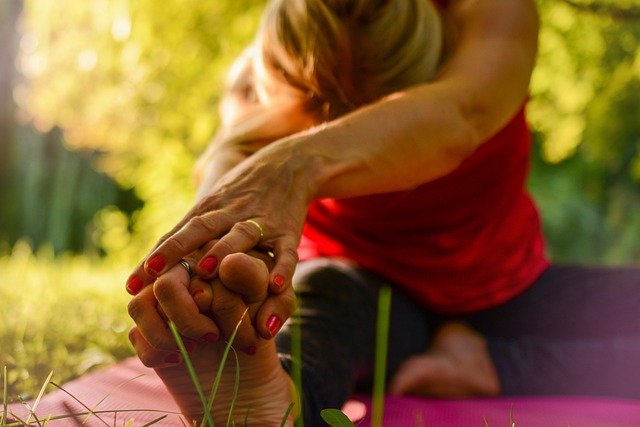If you’re like most people, you probably hate the idea of muscle pain. That aching sensation is never pleasant, whether it’s from overexertion or an injury. However, there are certain things you can do to help ease the pain and promote healing. One of those methods is stretching.
Contrary to popular belief, stretching isn’t just for athletes or dancers – anyone can benefit from it! Read on to learn more about how stretching can help with muscle pain.
Stretching Increases Blood Flow Around The Body And To The Brain
Stretching is essential whether you are injured or have a tight muscle. It improves circulation and prevents injuries. Some people skip stretching in favor of cardio or hitting the weight room, but you should make time for it. Even a short stretch will help.
Stretching also releases endorphins, a hormone that decreases pain perception. It is similar to a runner’s high. Stretching is great for your mental and physical health, and it is a simple way to incorporate movement into your daily routine.
While stretching can help ease muscle pain, it is essential to see a physical therapist if you feel it is affecting your daily activities. Physical therapists or even a professional stretching studio in Dubai can prescribe an exercise program for you that will help you get the most out of your activities. A physical therapist can also give you tips on how to perform stretches properly.
Stretching Reduces Muscle Soreness
If you exercise hard, you may experience soreness afterward. You may even be tempted to stretch your muscles to relieve the pain. However, stretching is not a proven way to ease sore muscles. Several studies have shown that stretching can actually make your muscles tighter.
Post-workout stretches help flush out your muscles and start the recovery process after a hard workout. These stretches won’t prevent muscle soreness, but they can help minimize the discomfort caused by sore muscles. If you don’t have time to go to a gym, you can perform these stretches in a doorway or on one side.
However, it is essential to note that stretching is a time-consuming exercise and is most effective when done regularly. Five to ten minutes of stretching a day can be helpful. It is important to remember that skipping these exercises will not affect muscle soreness or muscle pain or cause further injury. If you have a chronic condition, consult a physical therapist or doctor before attempting any stretching exercises.
Stretching Relieves Muscle Tension
Regular stretching is essential for maintaining a healthy range of motion in your muscles and joints. Muscles that are not stretched enough tend to tighten and shorten. They also can’t extend fully, which puts you at risk for muscle pain, strains, and joint injuries. Stretching helps prevent these problems by increasing blood flow to the muscles and joints.
It is best to stretch slowly and gently. Avoid jerking movements, as this can injure your muscles and cause them to become sorer. Instead, relax and hold the stretch for at least 30 seconds. If your muscles are particularly tight, you may want to hold it for up to 60 seconds. Repeat two or five times.

Stretching Improves Flexibility
While stretching is one of the best ways to improve flexibility and ease muscle pain, it should be done carefully. It can cause minor discomfort or even cause pain if overdone. To avoid this, you should always consult a doctor or a physical therapist before starting a stretching routine.
Stretching not only improves flexibility but also increases range of motion. This is important for everyday life and fitness activities. Besides the health benefits of increased range of motion, it also helps prevent injuries. Tight muscles are more prone to injuries because they cannot work at their peak performance. Practicing stretching regularly will maintain a flexible range of motion and reduce your risk of injuries.
When you are performing stretches, it’s best to warm up your muscles before you begin. The colder your muscles are, the more rigid and difficult they will be to stretch. Therefore, it’s best to start stretching after you have done some light cardio. It’s also beneficial for people who aren’t active to have a daily stretching routine. A routine consisting of static and dynamic stretches can increase range of motion, ease muscle pain, and improve posture.
Stretching Reduces Menstrual Pain
Stretching helps relieve menstrual pain by increasing blood flow to the muscles. It can also improve flexibility and mobility. It can also reduce stress. The most important thing to remember is to stretch only as much as you feel comfortable doing. In addition, it’s important to breathe deeply during the stretching process.
Many girls experience cramps during their periods. These cramps usually feel like pain in the lower back, upper legs, or pelvic region. They typically occur the day before their period and the first day of the period. They can be so painful that it can be difficult to attend school or work. Fortunately, stretching and moderate-intensity exercise can help relieve menstrual cramps and reduce your stress levels.
Women who engage in aerobic exercise can also reduce menstrual pain. This is because it increases the heart rate, which is essential for relieving discomfort. So a few minutes of exercise during your menstrual cycle can help you feel better.
Conclusion
As people age, they can experience more muscle pain and inflammation. This is because the tissues in our body break down as we get older, which makes them less elastic and more prone to injury. One way to combat this is through stretching.
Stretching helps improve blood circulation to the muscles and encourages the release of toxins that can build up and cause pain. Additionally, stretching helps increase range of motion and flexibility, which are important for keeping our muscles healthy as we age. So if you’re experiencing muscle pain, give stretching a try! It just might be what your body needs to feel better.



